Have you discovered mysterious droppings in your house? Determining whether they come from animals is crucial, as animal droppings often signal a larger infestation and potential health hazards. This guide will help you identify animal droppings in your home so you can take the appropriate steps to address the issue.
Why is Identifying Animal Droppings Important?
Recognizing animal droppings in your house is essential for multiple reasons. By distinguishing various types of animal waste, you can take the right actions to protect your health, prevent further damage, and effectively manage any infestations. Here are key reasons why identifying animal droppings is vital:
Health Risks: Animal droppings can harbor harmful bacteria, parasites, and pathogens that pose serious health risks. Diseases such as Hantavirus, salmonella, and leptospirosis can be transmitted through droppings. Identifying the type of droppings helps you assess potential health risks and take necessary precautions.
Property Damage: Ignoring animal droppings can lead to significant property damage. Droppings, especially from rodents and bats, often contain high levels of uric acid, which can degrade wood, drywall, and insulation over time. This can lead to structural weakening, especially in attics or crawl spaces. The acidity in droppings can corrode metal surfaces, including pipes, HVAC systems, and electrical wiring. This can pose fire risks and create hazards in your home’s systems.Bird droppings, in particular, can accumulate in gutters or ventilation systems, leading to blockages, water damage, or restricted airflow.
Odor Problems: Accumulation of droppings, especially from larger animals like raccoons or bats, can create a persistent and foul odor in your home. The smell can permeate walls, furniture, and fabrics, requiring costly cleaning or replacement.
Staining: Animal poop, especially from birds or bats, can leave unsightly stains on walls, ceilings, or floors. These stains are often difficult to remove and may require specialized cleaning.
Find out what type of pest animal is in your home.
Identifying Common Types of Rodent Droppings
Differentiating between various types of rodent droppings is crucial for proper identification. Here are the characteristics of rat droppings, how to tell apart mouse and rat droppings, and how to recognize squirrel droppings:
Rat Droppings
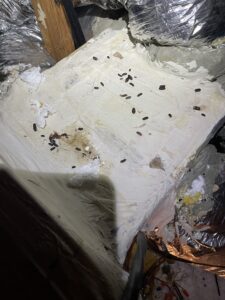
Typically dark brown or black, rat droppings are tapered and measure about 1/2 to 3/4 inch long, resembling grains of rice with blunt ends. They are usually found in concentrated areas, indicating high activity. Immediate action is necessary if you find these droppings to prevent an infestation.
Mouse Droppings
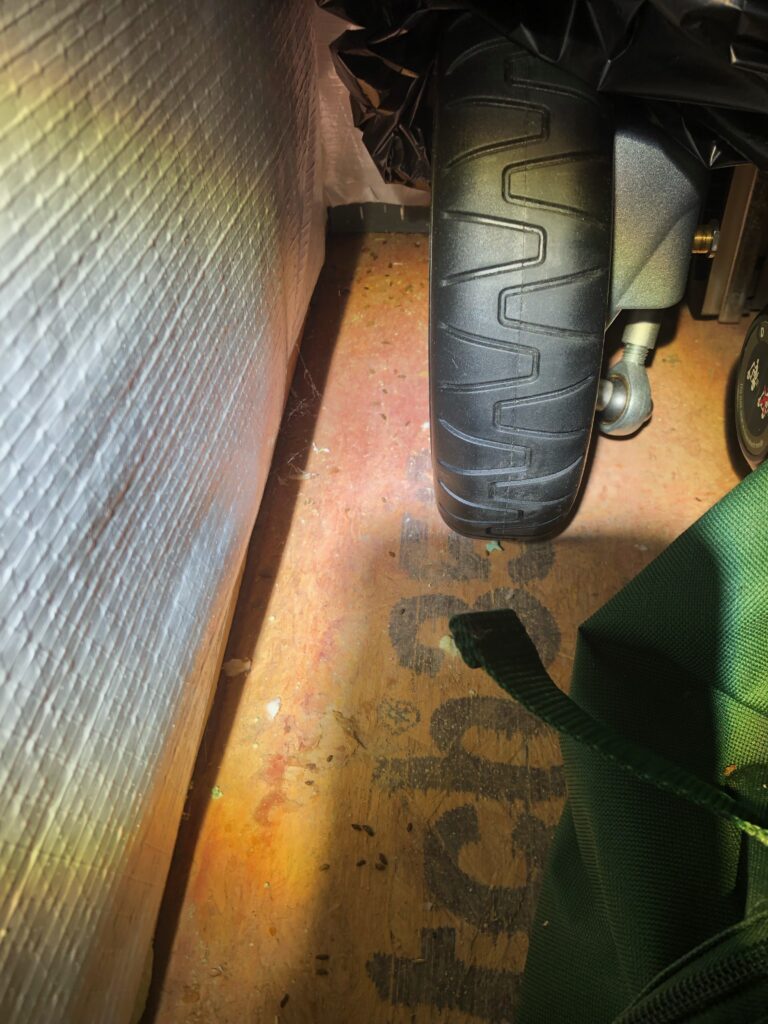
Smaller than rat droppings, mouse droppings are about 1/4 inch long with pointed ends and are often scattered. If you find small droppings spread around your house, you likely have a mouse problem.
Squirrel Droppings
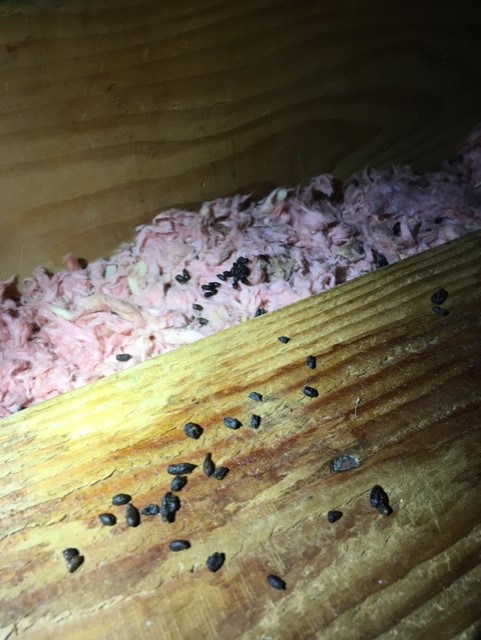
Larger than rat and mouse droppings, squirrel droppings measure about 3/8 to 1/2 inch long and are cylindrical. They are commonly found in attics, crawl spaces, or near entry points. Addressing a squirrel issue promptly is important to prevent further property damage.
Raccoon vs Opossum vs Skunk Poop
Raccoons, opossums, and skunks are some of the larger pest animals you might find in and around your home. All three mammals have similar-looking feces. Location can help narrow down the pest animal. Raccoons are the most common of the three pests to be in your attic. However, all three critters can live under porches, decks, and sheds.
Raccoon Poop

Often mistaken for dog feces, raccoon droppings are cylindrical and commonly found near garbage cans, decks, or attics. They usually contain undigested food particles such as berries or seeds and have a pungent odor, appearing dark brown or black. Raccoon defecate in shared locations, known as latrines.
Opossum Poop
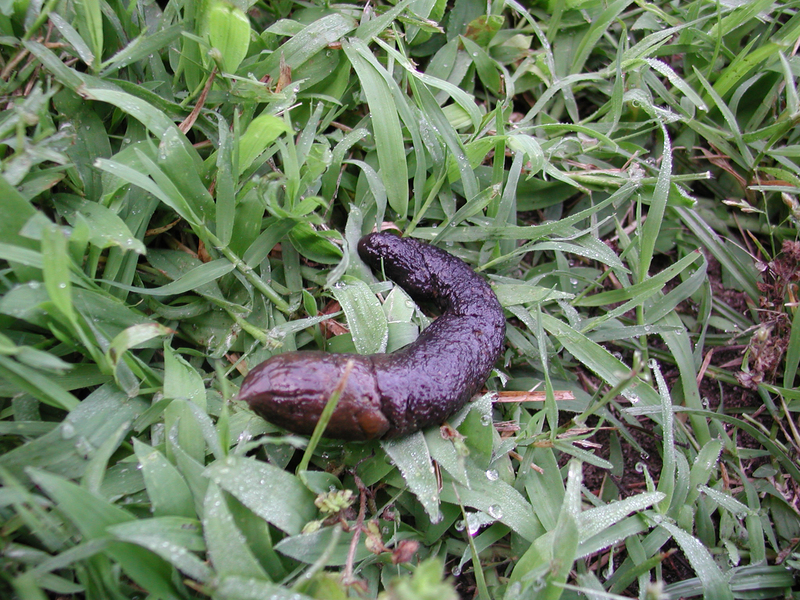
Most opossum droppings are around 3/4 of an inch in diameter and taper off at the ends. Opossum feces are roughly one to two inches long, smooth on the sides, and may have white or yellowish mold growing on the outer casings. Otherwise, opossum droppings are brown. The fecal matter also tends to curl as the animal excretes the waste.
Skunk Poop
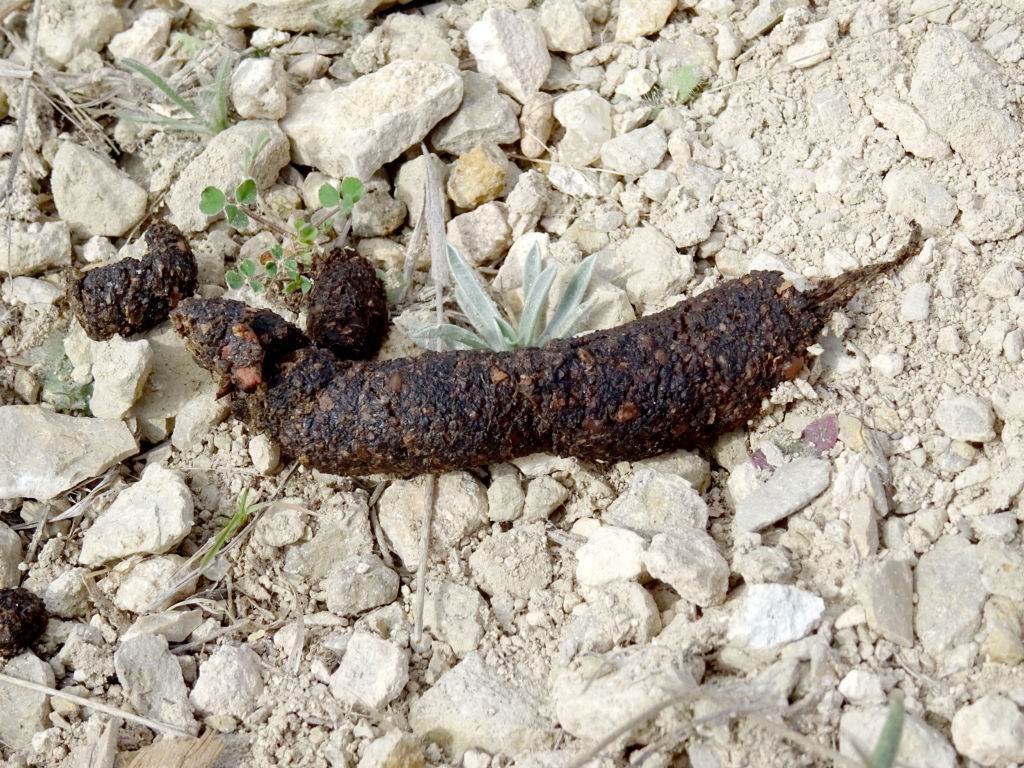
Skunk poop is usually near where they den or eat. Skunk waste is tubular, has blunt ends, and usually measures about a quarter to half an inch in diameter and one to two inches long. Skunk poop generally contains bits of undigested insects, berry seeds, fur, or feathers.
Identifying Other Pest Animal Droppings
Knowing what to look for can help you determine the source of animal droppings. Here are tips for identifying bat guano, and raccoon poop, and differentiating between bird and snake droppings:
Bat Guano
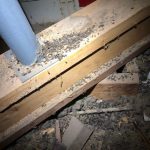
Bat droppings are small, elongated pellets with pointed ends found in dark, secluded areas like attics or crawl spaces. Bat poop color varies from dark brown to black depending on the bat’s diet.
Bird Poop vs. Snake Poop
Snake and bird poop can look similar. Bird droppings are whitish or grayish with a creamy consistency and may contain seeds. Snake droppings, known as snake scat, are brown or black and tubular with a pointed end. Like bird feces, snake feces is oblong and also quite wet.
Health Risks Associated with Animal Droppings
Animal droppings can spread diseases to you and your family. Here are some diseases that can be transmitted through droppings:
Hantavirus: Often found in deer mouse droppings, this potentially life-threatening virus can lead to Hantavirus Pulmonary Syndrome when airborne particles from contaminated droppings are inhaled.
Salmonellosis: Caused by the bacterium Salmonella, this infection can occur from ingesting food or water contaminated with animal droppings, leading to symptoms like diarrhea, fever, and abdominal pain.
Leptospirosis: Transmitted through contact with animal urine, including droppings, this bacterial disease can cause mild flu-like symptoms to severe complications affecting organs like the liver and kidneys.
How to Clean Up Animal Droppings Safely
If you’ve discovered animal droppings in your house, it’s important to clean them up properly to ensure your family’s health and safety. Follow these steps to safely clean up animal droppings:
Use Protective Gear: Before starting the cleaning process, protect yourself from potential health risks by wearing disposable gloves, a face mask, and safety goggles to avoid direct contact with droppings and airborne particles.
Do NOT Sweep or vacuum: Avoid sweeping or vacuuming droppings, as this can release particles into the air. Instead, dampen the area with a disinfectant solution and use disposable materials to carefully pick up and dispose of the droppings.
Disinfect the Area: After removing the droppings, clean the area thoroughly with a disinfectant solution. Mix a quarter cup of bleach with one gallon of water and use this mixture to wipe down surfaces, floors, and objects that may have come into contact with the droppings. Follow the disinfectant product’s instructions for proper usage.
Proper disposal of contaminated materials is crucial to prevent disease spread. Seal the droppings and cleaning materials in a plastic bag and dispose of them in an outdoor trash can with a tight-fitting lid. Clean and disinfect any surfaces that may have been in contact with the droppings.
Wash your hands!
If you suspect an infestation of bats, raccoons, or other pest animals, seek professional assistance. Trutech specializes in wildlife removal and can help you identify and safely remove pests from your home and safely clean up all animal feces.
Preventing Animals from Entering Your House
Preventing animals from entering your house is essential to avoid potential damage or health hazards. Here are a few effective measures you can take:
Removing Attractants: Animals are often drawn to food sources and shelter. Keep your property clean and free from attractants like uncovered garbage cans, fallen fruits, or bird feeders. Store pet food indoors and secure compost bins to deter wildlife.
Maintaining Cleanliness: Regularly clean your house, especially areas prone to animal infestations like attics, basements, and crawl spaces. Remove any droppings, nests, or debris left by animals. This helps identify potential issues and discourages animals from returning.
Implementing these preventive measures can significantly reduce the risk of animals entering your house, but animals are resourceful. Even the most prepared homeowner can experience a nuisance wildlife problem.
If you suspect an animal infestation or need help identifying animal droppings, consult a professional wildlife removal service like Trutech. They have the expertise and experience to handle wildlife issues effectively, ensuring the safety of your home and family.


